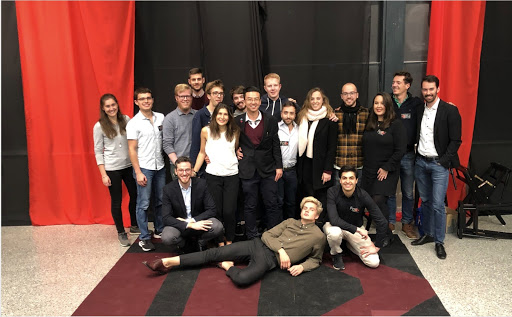
It’s a warm Monday evening in the beginning of October 2019. About 20 dedicated, inspired students are working out the last details before the conference and the air in the room is electrifying. We have come less than two weeks before the conference. Last minute details are ironed out, who’s going to do this and that and be here and there. Everybody is getting more and more excited by the day as the event comes closer. Attendees are signing up by the hundreds. The speakers are excited and enthusiastic about sharing their failures. The stage is set for the biggest FAIL! conference yet.
Looking back, it was a very exciting time, some of the biggest professors in the world, a journalist and a superstar athlete all saw it with us, saw the need for talking about this. It was special for us, for me, to come to this magical place called MIT, and by just trying our best, failing while doing and still going forward we could organize something so special and powerful. And it helped immensely, both organizing and watching the event. The professional tension and hardship is very noticeable here, and stepping out of the daily research pressure to go for an event about failure puts things in perspective.
That was our biggest event yet, the last live one at that, but even without live events we follow our mission. Even more, the idea of destigmatizing failure and inspiring resilience is growing and we believe our communities are strengthened through the collective sharing of the times when things did not go as planned.

This idea comes at a time like none before. Stress in academia is climbing year by year and students are being affected by it at an alarming rate [1]. It sometimes might seem that failure is not an option, everyone else around you seems to be better than you and you might just be here by mistake. The stress and isolation in this environment brings you down to the lowest of lows, and instead of celebrating growth and opportunity we bury ourselves in depression and anxiety. In academia the rate for anxiety or depression is more than six-fold of that of the general population [2]. It is an issue that strongly affects universities both in America and abroad.
The need for creating stronger, more resilient communities and destigmatizing failure has grown more than ever. Often it is forgotten how much can supportive people around you help. How much can a strong community empower you and make you more resilient. This belief in building more healthy communities was the main driving force for FAIL! It brought together around 20 people in early 2018, most of whom had not even seen each other before and who had little experience in organizing events. But the initiative of destigmatizing failure united them and it energized them into working long nights for hosting the first of many conferences, of bringing life into the movement. The movement that is growing day by day and has reached tens of thousands of people with events in 3 continents and continues to inspire.
It all started with a wish for a braver and more resilient individual, with countering the prevailing mentality on failure. And finally to create stronger bonds with those around us through sharing our vulnerabilities and strengthening each other.
References:
[1] Reddy, K. Jayasankara, Karishma Rajan Menon, and Anjana Thattil. "Academic stress and its sources among University students." Biomedical and Pharmacology Journal 11.1 (2018): 531-537.
[2] https://www.lindau-nobel.org/blog-mental-health-academia/


